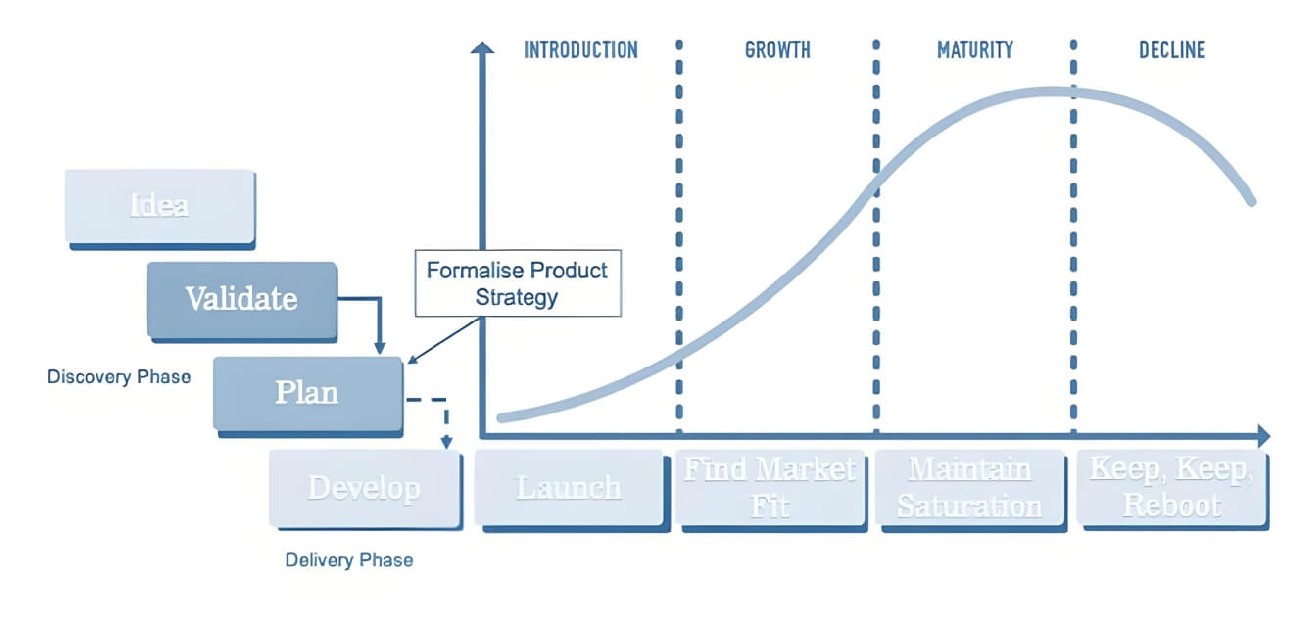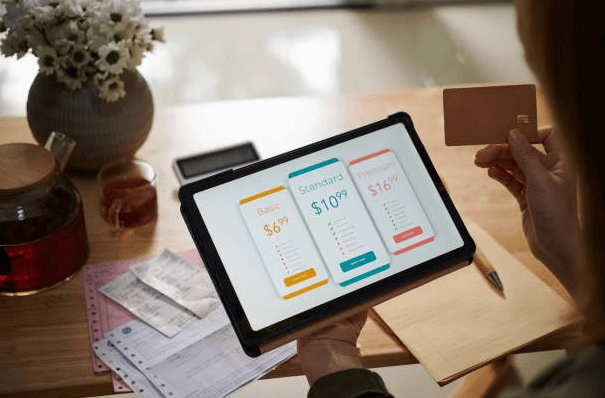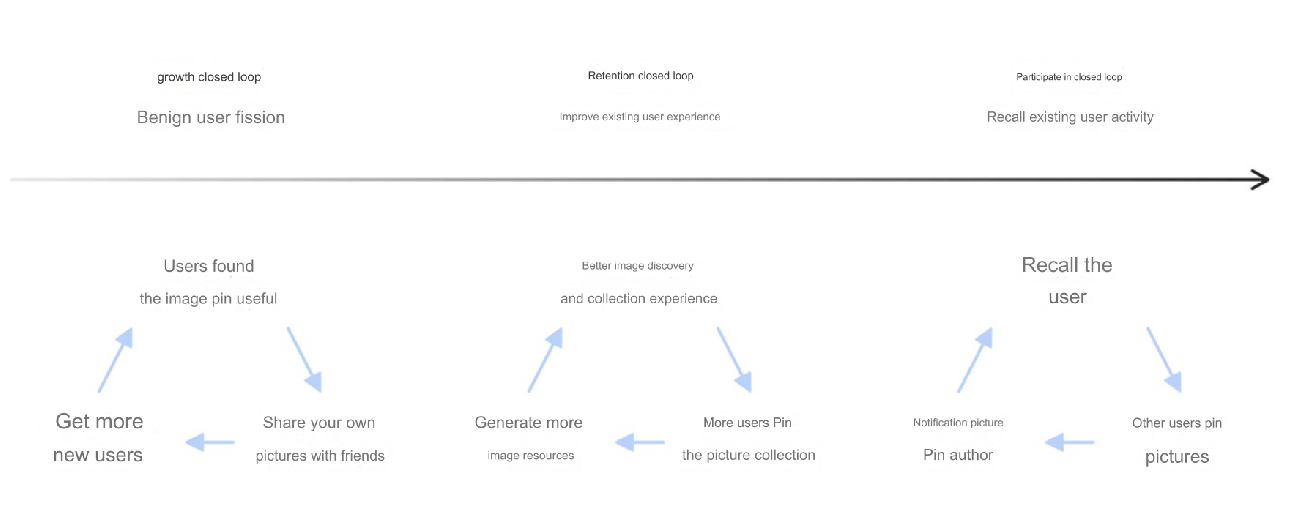Everything in the world has its own lifecycle—humans experience birth, aging, illness, and death, while products go through stages of growth and decline. But is it possible to predict these cycles? And how can we ensure maximum benefit at each stage? In this article, the author shares insights and strategies to address these questions, with the hope of providing valuable guidance for readers.
Since ancient times, humanity’s exploration of the universe has never ceased. From the microscopic life cells to the vast cosmos, from the profound oceans to the mysterious dark matter and black holes, despite the many unknowns and confusions about the mysteries of cosmic life, we have gradually developed and summarized a series of profound theories about lifecycle.
In simple terms, everything has a beginning and an end, much like human life—birth, aging, illness, and death, or the blooming and withering of flowers. All things in the universe play out their own legends in the cycle of life and death.

As Laozi said in the Tao Te Ching: “The Dao begets one, one begets two, two begets three, and three begets the myriad things. The myriad things undergo transformations, returning to the unity.”
This describes not only the creation and evolution of the universe but also provides a profound interpretation of life and philosophy.
To put it more simply, it describes the complete process of an entity from its birth to its demise.
Today, lifecycle theories are widely used across various fields, including society, politics, economics, business, and technology.
Everything in the world undergoes a cycle of life and death.
What kind of person is suited to be a B2B product manager?
To become an excellent B2B product manager, understanding both the business and the product is crucial. The B2B space is highly specialized, with slow product iterations and promotions, creating numerous job opportunities...
So, how can we predict the lifecycle of an internet product?
How can we enhance market competitiveness and maximize user value at different stages of a product’s lifecycle?
Take three seconds to think.
3, 2, 1
This might sound like an elusive question with no clear answer.
OK, I'll give you the answer.
The answer is: Yes, it is possible.
In the field of data analysis, we can observe various applications of lifecycle theories. These theories not only help us understand the development patterns of things more deeply but also provide useful guidance and insights for our actual work.
In this content, we will discuss two commonly used lifecycle management theories in the internet field: “Product Growth Cycle” and “User Lifecycle.”
These two cycles have very similar curves and can easily be confused. Literally, one focuses on the product, and the other focuses on the user.
Many people start by blindly studying the user lifecycle.
The Product Growth Cycle focuses on the overall development stages and macro characteristics of the product, from the introduction stage to the growth stage, then to the maturity stage, and possibly to the decline stage. It reflects macro indicators like user scale, growth rate, and market share at different stages.
On the other hand, the User Lifecycle focuses more on individual user behavior and micro processes within the product. The main difference lies in their focus and stage definitions.
The two need to be combined for a comprehensive understanding of both the product and user situations.
The “Product Growth Cycle” curve is an inverted S-curve that depicts the complete process of a product from its birth to its decline.
This process is generally divided into four stages: “Exploration,” “Growth,” “Maturity,” and “Decline,” with user numbers significantly changing with each stage.
This curve precisely reflects the fluctuation trend of user numbers over time, providing a powerful tool for understanding the product’s growth trajectory.
Products originate from user needs, but these needs are always dynamically evolving. A newly launched product may satisfy current needs but might not address the essence of the need.
Therefore, the core goal during the “Exploration” stage is to accurately capture user pain points, conduct in-depth function analysis, and continuously hypothesize, validate, iterate, and execute through PoC to rapidly validate and optimize the product, thus gaining user recognition.
During the Exploration stage, focus on:
-
Conducting in-depth market research or competitive analysis to uncover real user pain points and needs.
-
Performing needs analysis based on these needs, and using MVPs to understand and verify how well the product addresses user problems. After completing PoC and MVP, design the product prototype, development, testing, etc., based on the minimally viable product to ensure the stability and reliability of the product’s core functions.
Definitions:
-
PoC (Proof of Concept) refers to demonstrating the feasibility of an idea, concept, or theory in a simple way.
-
MVP (Minimum Viable Product) refers to analyzing the product through its minimum usable version.
After careful refinement and iteration, the product should meet the needs of a stable user base and demonstrate good retention capability.
At this point, the user number will continue to grow, and the main goal of the product shifts to acquiring more users, achieving conversion monetization, building brand image, spreading positive word-of-mouth, and ultimately reaching the highest profit point within the lifecycle.
In the “Growth” stage, focus on monitoring page access data, transition conditions, access duration, and user pathways, with special business metrics and functional scenarios designed to lead users to an Aha Moment—indicators that reveal users’ true needs and behavior patterns.
Through continuous product feature optimization, enhancing user experience, strengthening market promotion, and operational strategies, strive to promote the product’s healthy development, achieving higher market share and profit returns.
Definition:
-
Aha Moment is a term proposed by German psychologist Karl Bühler, referring to the moment when a user first perceives the value of a product. It usually occurs when the user first uses the product, especially during the activation process.
From the user’s perspective, when a user downloads a product, they start looking for the product’s value to them. The moment they confirm the product is “useful,” they experience the Aha Moment. Users may or may not realize this moment, but whether they experience it determines if they become retained or lost users.
As the user base rapidly expands and the product’s positioning and user base stabilize, the growth rate of new users slows down, and the activity of old users becomes dominant.
At the same time, as the product meets users' real needs, competing products begin to emerge, increasing the intensity of user competition, leading to rising costs for acquiring new users and increasing channel investment costs.
In the “Maturity” stage, the core goal shifts to effectively activating and maintaining the existing user base. Commercialization becomes the key focus, with the work focus gradually shifting from acquiring new users, enhancing activity, and improving retention rates to reducing user churn, implementing user recall strategies, and exploring user value, aiming to maintain new user growth at a lower cost and continue to generate stable revenue.
When the product enters the “Decline” stage, the tasks become relatively limited. The focus should be on delaying the product’s decline, actively assisting in the product’s transformation, exploring new needs among existing users, or, after careful consideration, deciding to shift user groups and exit the original competitive market.
For products in the decline stage, the focus should be on reactivating dormant users and recalling lost users.
Of course, if new growth points can be found, the product might rejuvenate, but this requires not only a bit of luck but also careful strategy and planning.
From the perspective of product growth cycles, the pattern is significant: during the exploration stage, user acquisition costs are high, and the product’s positioning is unclear. After entering the growth stage, positioning becomes clear, and costs gradually decrease. However, during the maturity stage, market saturation and fierce competition drive up acquisition costs again, leading to the decline stage.
It’s worth noting that while both the exploration and maturity stages have high costs, they differ significantly. Exploration has a high user conversion potential, while maturity has a large user base and intense competition.
Combining user lifecycle curve analysis helps enhance user stickiness and usage duration.
The “User Lifecycle” curve closely resembles the Product Growth Cycle curve, both undergoing a natural evolution from birth to decline. This process is generally divided into five stages: “Introduction,” “Growth,” “Maturity,” “Silence,” and “Churn,” each reflecting different states and characteristics of users during the product use process, with operational strategies focusing accordingly.
In the Introduction stage, focus on user acquisition strategies to attract users to try the product for the first time.
In the Growth and Maturity stages, focus on activation and retention strategies, using various methods to stimulate user activity and loyalty.
In the Silence and Churn stages, use reactivation and recovery strategies to extend the user lifecycle and reduce churn.
The commonly mentioned operational strategies of “user acquisition,” “activation,” and “retention” are based on the user’s status in these five stages.
After users enter the product, they go through their own growth path, which is a micro-level behavior observation, while the user lifecycle represents the phased behavior of user groups from a macro perspective.
Users grow with the product, becoming increasingly active but might eventually churn for various reasons, completing the entire lifecycle cycle. This reflects user growth and reveals the overall evolution pattern of user groups.
The “Introduction” stage is responsible for attracting new users and expanding the user base.
During this stage, in-depth analysis of potential user profiles is crucial. Market research, competitive analysis, and target user group studies can help sketch out potential user characteristics and deeply explore their core needs, find effective acquisition channels, and develop corresponding strategies.
Detailed research and data analysis on different user groups are needed to understand their acceptance of the product’s business model, features, and interface.
This data helps the product make swift and efficient business decisions, setting clear goals and directions for agile iteration.
To precisely acquire target user groups, various strategies can be employed, such as in-product traffic driving, promotional media, holiday event planning, and online-offline integration.
Utilize third-party big data applications, monitoring SDKs, and other tools to collect and analyze user profile data, reduce development costs, and accurately characterize target user traits and key behaviors. This helps verify the consistency between hypothetical and actual users and continuously optimize the product experience to improve user satisfaction.
Closely monitor key indicators such as user retention rate, stickiness, and usage duration. These indicators reflect users’ initial perceptions of the product and provide critical insights into user expectations.
The key to improving user activation rate is to understand user behavior patterns. Observe and analyze user pathways and needs to help users quickly experience the product’s value.
The “Growth” stage is characterized by the rapid expansion of user scale, high user activity, and increasing user stickiness. In this stage, focus on user retention and enhance the product’s attractiveness and competitiveness.
Definition:
-
User retention rate refers to the percentage of users who continue to use a product or service over a specific period, often used to measure user engagement and satisfaction.
-
Stickiness refers to the duration users stay engaged with the product and their frequency of use, reflecting the product’s ability to meet user needs and maintain user interest.
-
User churn rate refers to the percentage of users who stop using a product or service over a specific period, often used to measure user satisfaction and the effectiveness of retention strategies.
The “Maturity” stage represents a relatively stable period for the product, with established user groups and steady usage behavior. At this stage, focus on:
-
Building user loyalty and creating additional value for users.
-
Enhancing the user experience and adding features or services that meet evolving user needs.
-
Utilizing user feedback to optimize the product, improve retention, and reduce churn.
-
Exploring new user acquisition channels and strategies to maintain growth momentum.
-
Strengthening brand influence and market position through effective marketing and promotion strategies.
In the “Silence” stage, users may become less active or disengage. To address this, implement the following strategies:
-
Analyze user data to identify reasons for disengagement and develop targeted strategies.
-
Re-engage users through personalized communication, promotions, or new feature updates.
-
Create value-added content or services to rekindle user interest and increase activity.
Finally, in the “Churn” stage, focus on:
-
Analyzing churn reasons to understand why users are leaving.
-
Implementing measures to address the identified issues and reduce churn.
-
Exploring ways to re-engage churned users, such as special offers or personalized outreach.
Combining the Product Growth Cycle with the User Lifecycle provides a comprehensive perspective on both product development and user behavior. This integrated approach helps optimize product strategies, improve user satisfaction, and enhance overall business performance.







